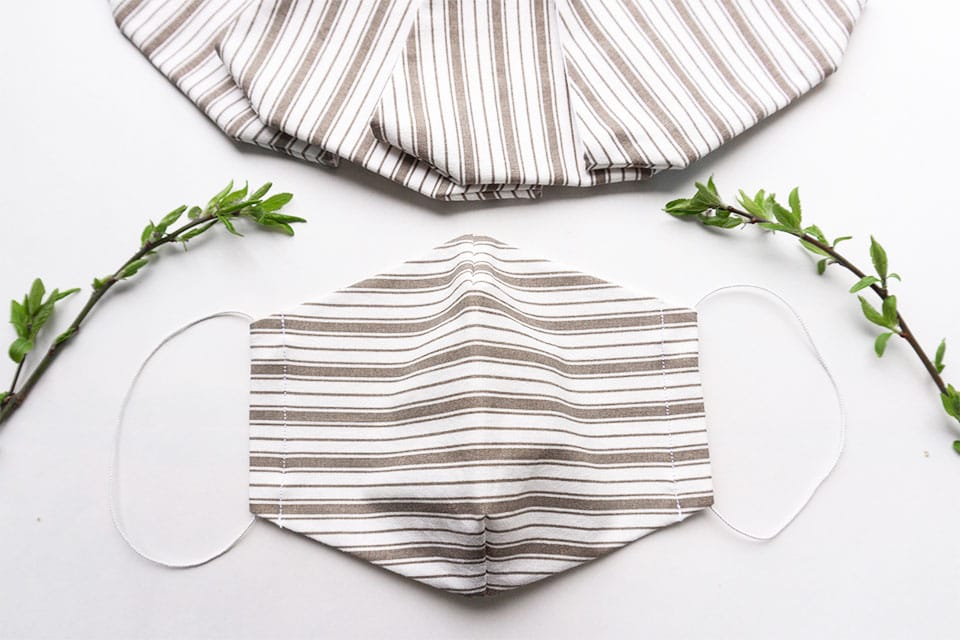Our new norm in the face of COVID has required us to embrace new ways to continue our daily lives. For me, that has included finding innovative ways to connect with my community, establishing new schedules to support my children’s education and playtime, and even incorporating more stringent routines to my skin care regimen. And with good reason.
Now that the CDC has recommended wearing face masks to help prevent the spread of the virus, I find that many of us might be experiencing the unpleasant effects of face coverings. Whether we wear a mask for an hour or even longer, we know our skin can quickly become irritated, especially those of us with sensitive skin.
Not only is our skin the largest organ of our body, it plays a critical role in immunity, temperature regulation and overall health. So, I reached out to my team of dermatologists and skin care experts—all of whom have reported increasing complaints from mask-related skin irritation, rashes, redness and even infection—to learn more about the reasons our skin is reacting, and what we can do about it.
Masks cause micro moments of friction that add up
The skin on our face is particularly vulnerable to injury and irritation compared to that of our skin in other parts of our body, in large part because our facial skin is just thinner. Our skin’s protective outer layer, the epidermis, measures at about 0.1 mm in thickness on the eyelid compared to approximately 1.5 mm in thickness on the palms of the hands. That means the skin on our face is going to react a lot differently to being covered and rubbed against the skin of our shoulders (1.0 mm thickness) after wearing a shirt, for example.
Natural movements create friction – rubbing up against the same areas of your skin over and over. This causes top-layer skin cells to release water, setting off a vicious cycle that interferes with your skin’s natural lubricating process, ultimately causing irritation, uneven texture and even other skin conditions.
Our skin increases or decreases cellular turn over and oil production based on its state of hydration and lubrication. The skin barrier—also known as the lipid barrier—is designed to maintain skin’s hydration by keeping much-needed H2O molecules inside. So, when water is released from abraded skin, bottom-layer skin cells start to receive mixed messages that cause them to essentially pull back on producing much-needed natural oils. The result is dry skin that can begin to crack and worsens with every mask use.
Wearing masks means sensitive skin is suddenly exposed to chemicals and irritants
The skin on our face is significantly thinner and more sensitive than the rest of your skin - more susceptible to absorbing harmful chemicals and toxins. If you’re noticing redness or irritation, it could be caused by dyes or other chemicals in the fabric, or even fragrances and chemicals in detergents being used.
Masks can trap the moisture and oils that cause breakouts
Wearing a mask for even a short period causes excess moisture from breath and sweat to throw off your skin’s natural balance. Facial skin contains more subcutaneous glands than any other part of the body. These glands help lock in hydration and lubricate skin with natural oils. But when all these natural oils get trapped inside the skin with excess moisture and other particles such as dust and dirt, the result can be something skin care experts call “maskne,” rashes and breakouts caused by pores that are clogged from wearing a mask.
Masks can throw off our skin’s microbiome
When we think of microbiome, many of us might first think of gut health. But our skin also has a rich colony of happy and helpful bacteria keeping it healthy and glowing. This flora works to protect our skin from harmful bacteria that cause breakouts and premature aging. But when skin’s pH gets thrown off—as it can with increased friction, exposure to chemicals and over-washing with soap—the microbiome environment can become unstable, making our skin more susceptible to skin conditions and other complications. And as we head into the summer months, with increased temperatures and exceptionally dry or humid air, skin-irritating bad bacteria will have an even happier place to thrive.
So how can we comply with the CDC’s recommendations to wearing a mask while saving and even enhancing our skin?
Try these four tips...
- Choose a gentle, rejuvenating cleanser to support and protect your skin’s microbiome.
- Choose fabrics that are made without harsh chemicals or colors. Undyed or naturally dyed organic fabric is best.
- Wash masks after every daily use with a chemical- and fragrance-free detergent.
- It’s critical you protect the skin’s lipid barrier from friction and damage, so use a hydrating moisturizer before and after every wear and at night. I trust and use daily OMI Renew Day Cream and OMI Renew Sleep-In Mask.





